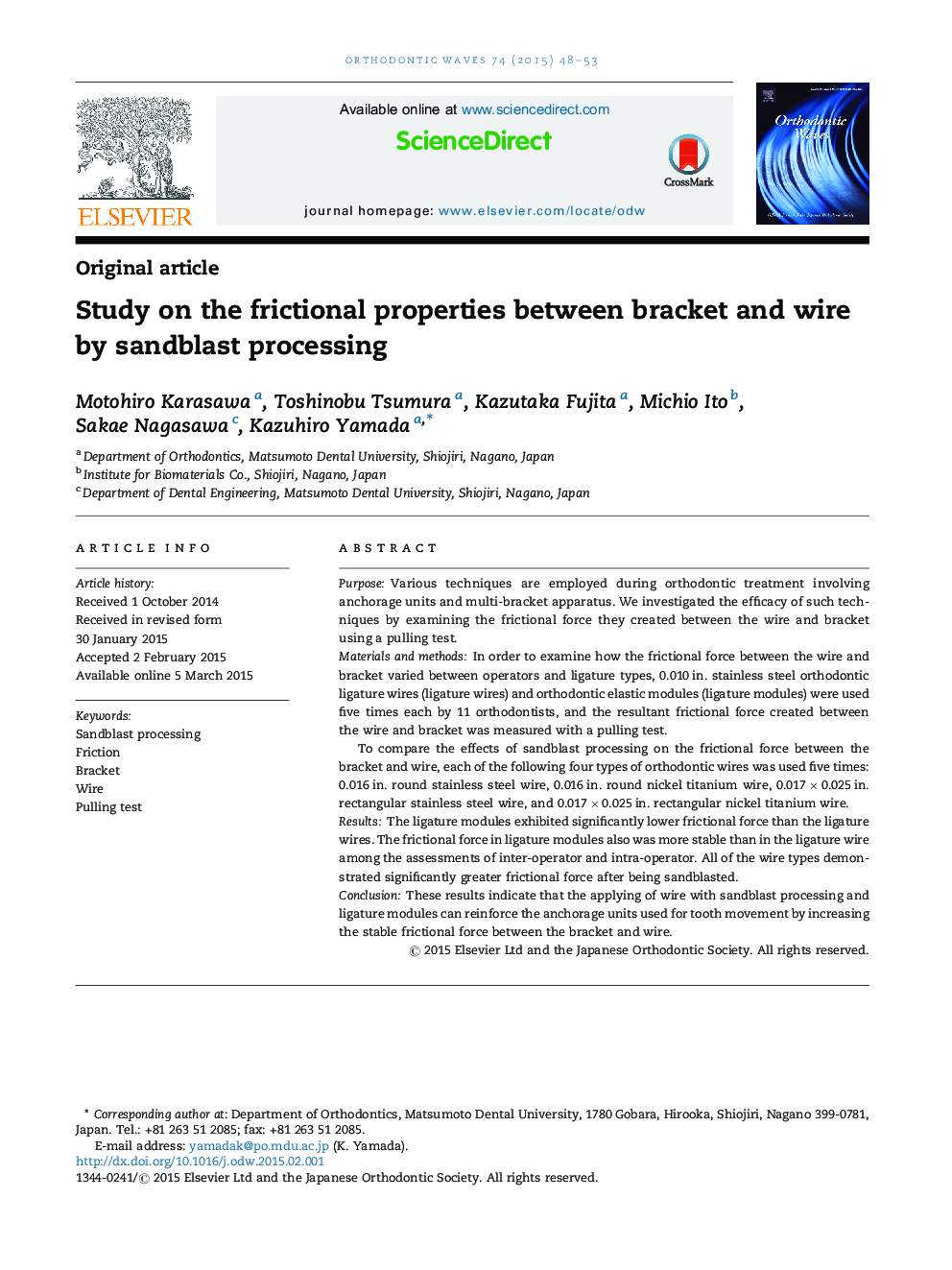| Article ID | Journal | Published Year | Pages | File Type |
|---|---|---|---|---|
| 3170278 | Orthodontic Waves | 2015 | 6 Pages |
PurposeVarious techniques are employed during orthodontic treatment involving anchorage units and multi-bracket apparatus. We investigated the efficacy of such techniques by examining the frictional force they created between the wire and bracket using a pulling test.Materials and methodsIn order to examine how the frictional force between the wire and bracket varied between operators and ligature types, 0.010 in. stainless steel orthodontic ligature wires (ligature wires) and orthodontic elastic modules (ligature modules) were used five times each by 11 orthodontists, and the resultant frictional force created between the wire and bracket was measured with a pulling test.To compare the effects of sandblast processing on the frictional force between the bracket and wire, each of the following four types of orthodontic wires was used five times: 0.016 in. round stainless steel wire, 0.016 in. round nickel titanium wire, 0.017 × 0.025 in. rectangular stainless steel wire, and 0.017 × 0.025 in. rectangular nickel titanium wire.ResultsThe ligature modules exhibited significantly lower frictional force than the ligature wires. The frictional force in ligature modules also was more stable than in the ligature wire among the assessments of inter-operator and intra-operator. All of the wire types demonstrated significantly greater frictional force after being sandblasted.ConclusionThese results indicate that the applying of wire with sandblast processing and ligature modules can reinforce the anchorage units used for tooth movement by increasing the stable frictional force between the bracket and wire.
